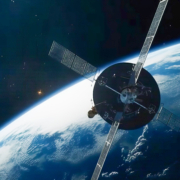Geopolitics, tech and central banks
US/China tech tensions: The Nvidia/AMD deal
In a first-of-its-kind move, Nvidia and AMD agreed to pay the United States (US) government 15% of their revenue from certain chip sales to China in exchange for export licences. For Nvidia, that could mean billions annually, given Bernstein’s $23 billion estimate for 2025 Chinese H20 chip sales. The deal reopens a vital market but sets a precedent for state revenue-sharing in corporate exports, potentially introducing a quasi-tax on strategic industries. While it boosts short-term earnings, the arrangement raises security concerns and highlights Washington’s evolving export-control strategy, moving from outright bans to conditional market access. If copied, such models could reshape margins and supply chains across multiple sectors.
Tariff walls and inflation risks
Trump’s tariff regime has pushed the US’ effective tariff rate to 9.1%, its highest since the 1930s. Goldman Sachs expects these levies to lift annual Consumer Price Index (CPI) inflation to 3.3% by the end of 2025 (2.5% excluding tariff effects). July’s CPI, due soon, is forecast to rise 0.2% month-on-month but political interference fears risk undermining trust in official data. With tariffs feeding into core inflation, the Federal Reserve’s (Fed’s) scope for near-term rate cuts may narrow.
The Fed’s independence
Fed Chair Jerome Powell has resisted Trump’s push for aggressive cuts despite inflation ticking up to 2.6%. Powell’s term ends in May, sparking speculation over successors such as Kevin Hassett, seen as more aligned with the administration’s growth-first agenda. History shows that presidents often appoint Fed Chairs expecting loyalty, only to see them prioritise inflation control. Markets will watch closely: A politically driven Fed risks undermining credibility, steepening bond yields, and adding currency volatility.
Energy markets
Spain’s solar boom (spurred on by policy support and abundant sunshine) has led to oversupply, crushing wholesale power prices. Without matching storage or demand growth, this could deter future investment, underscoring the volatility of unbalanced renewable expansion. Conversely, oil majors are pivoting back to fossil fuel exploration. Slower-than-expected clean energy uptake and geopolitical energy security concerns are reviving long-term demand projections for oil and gas, complicating global decarbonisation goals.
Geopolitics: The Alaska Summit
European leaders are pressing Washington to take a harder stance against Moscow ahead of the 15 August Trump/Putin talks. Brussels is exploring using frozen Russian sovereign assets to fund Ukraine while warning against any territorial concessions. Markets will respond sharply: A ceasefire could trigger a Ukrainian bond rally, while a breakdown could spike commodities and drive safe-haven flows.
Global central banks: Policy divergence
The Reserve Bank of Australia is expected to cut rates to 3.6% after inflation eased to 2.7%. In contrast, the Fed and the Bank of England face tougher trade-offs between cooling labour markets and tariff-driven price pressures. Divergent paths could fuel currency swings, particularly in USD/AUD and USD/GBP.
What does this mean for investors?
+ Equities: US tech gains from renewed China access may be tempered by regulatory overhangs. Defence, artificial intelligence, and energy stocks remain geopolitically sensitive.
+ Fixed income: Higher tariff-driven inflation could delay easing by the Fed, keeping Treasury yields elevated.
+ Commodities: Oil is supported by supply-side shifts, while solar market volatility highlights renewable investment risks.
+ Foreign exchange: Central bank divergence offers tactical opportunities in AUD and GBP.
Global markets remain caught between short-term boosts from selective trade openings and longer-term headwinds from inflation, policy unpredictability, and shifting geopolitical alliances.
This article has been published on Moneyweb.





